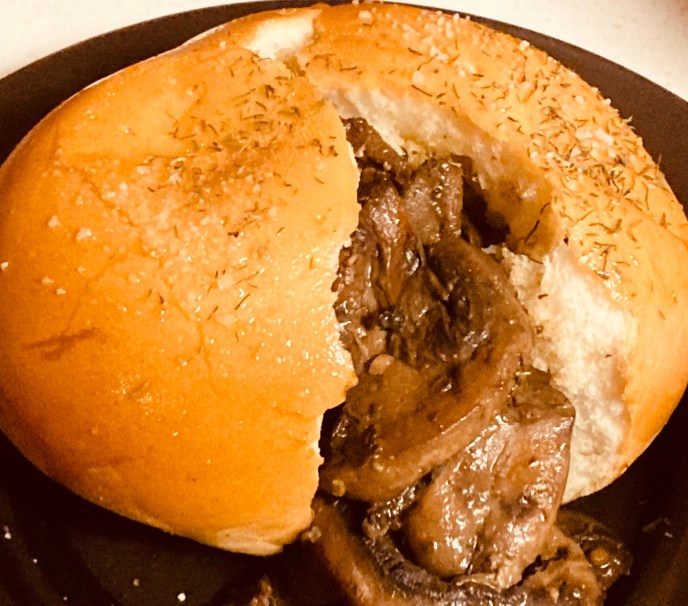
Served hot in a traditional Hussar’s Bake Pot
with sour cream, fresh dill, and a toast of Stoli Водка.
Every Slavic family has their own recipe for borscht – and they are always delicious. This is an amalgamation of my favorites – gleaned from years of dining with friends and colleagues – in Russian homes and at Russian tables. A rich red wine, beef, tomato and root vegetable stew that warms the bones on cold winter evenings.
Ingredients:
- Sirloin tips – or stew beef – (bite-size) and rolled in flour
- 4 pieces pancetta (cubed) or thick-cut bacon (chopped)
- 2 cloves fresh garlic
- 1 chopped cooking onion
- 2 cups beef stock
- 5 cups Red wine (hearty merlot or cabernet sauvignon)
- 3 large Jullienne carrots
- 3 large Jullienne beets
- 1 head shaved cabbage
- 1/2 cup tomato ketchup
- 2-3 Tbs Worcestershire sauce
- Sour Cream
- Fresh Dill (or dried)
- Salt and pepper to taste



Method:
Braise beef and pancetta or bacon.
Add onions, garlic, salt and pepper to taste.
Cook until just translucent
Add beef stock, red wine, and Worcestershire sauce
Simmer for one hour
Add carrots and beats
Simmer for twenty minutes
Add cabbage and ketchup
Simmer for twenty minutes or until ready to serve
Finish with a healthy dollop of sour cream and a generous amount of dill weed.
Traditional Pairing:
This is complimented beautifully with traditional mushroom or potato piroshki. A fun family activity to make from scratch, a quick imitation may also be made by stuffing a large uncooked dinner roll with mushrooms or potatoes or hard-boiled egg.
First sauté desired “filling” in bacon (or suet) a little chopped onion, and splash of sherry. Stuff each roll, pressing the filling well into the center. Bake seam-side down and brush with butter, salt, and dried thyme or dill.
Any leftover mixture may be stirred into the stew during the final simmer.
Often served with a famous potato-based beverage of intoxicating reputation – always toasted in pairs…
Ваше здоровье! (To your health!)






The Bible of Russian Cooking
“My book is intended to help housekeepers of modest means who must adjust to life’s vicissitudes.”
Elena Molokhovets
“The Fanny Farmer… of Russia’s 19th century.” – Julia Child (Food Arts)
Classic Russian Cooking: “A Gift to Young Housewives” – Indiana University Press: 1998
The classic of Russian cuisine is Elena Molokhovets’ “A Gift to Young Housewives” – first published in 1861- and continually revised by the author until 1917. Its introduction vividly paints the culture and history of Russia – and prepares us for a remarkably detailed and engrossing period story of pre-communist domestic life.

with a set of Hussar Bake Cookware
1996
“A Gift to Young Housewives” advises avoiding domestic disaster with such practical advice to send the “footman well ahead to the meat market” when planning to entertain, avoiding children “scrapping frozen shards” of sawn meat off the ground, and double checking the butler’s wine count. It even includes the proper layout for a kitchen and cook’s quarters.
The history includes a practical hierarchy during harsh winters of placing certain foods “closest to the stove” for keeping warm – then using the same heat source to position the elderly, ill, and small children – while the fit and healthy can be furtherest from the warmth. There is also an intriguing section on the safe transport of raw fish (including Sturgeon) in a part of the world that is literally frozen most of the time.
This volume is as rich and warm a period experience as the delicious “Hussar Bake” (the traditional wine, beef, cheese, and egg-yoke casserole) of the Czar’s bodyguards.






“If more of us valued food and cheer and song above hoarded gold, it would be a merrier world.”
JRR Tolkien
Author: “The Lord of the Rings”
20th Century Oxford professor, poet, and philosopher
